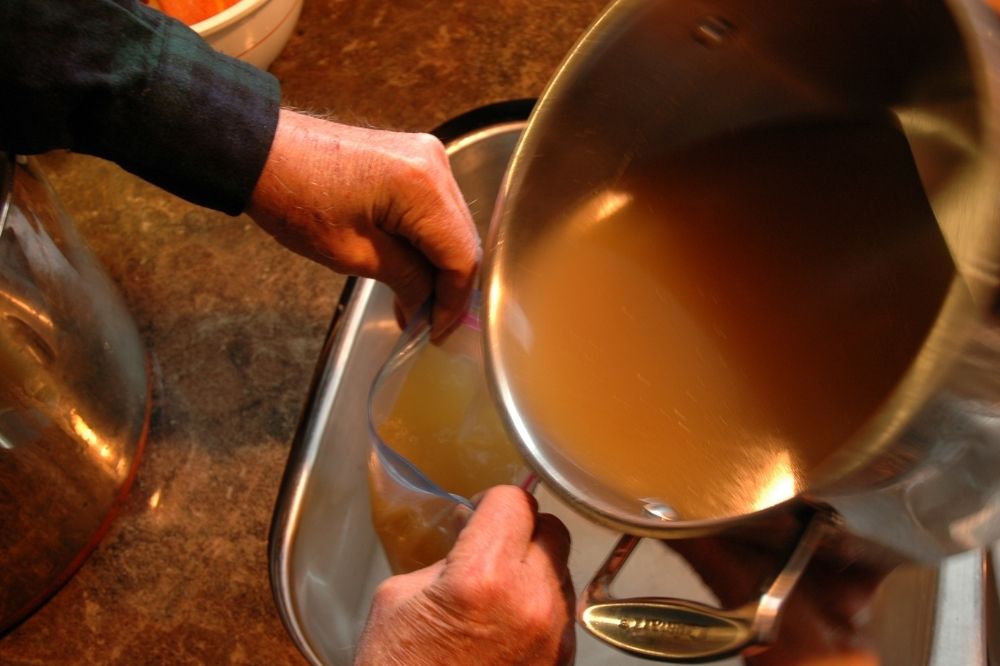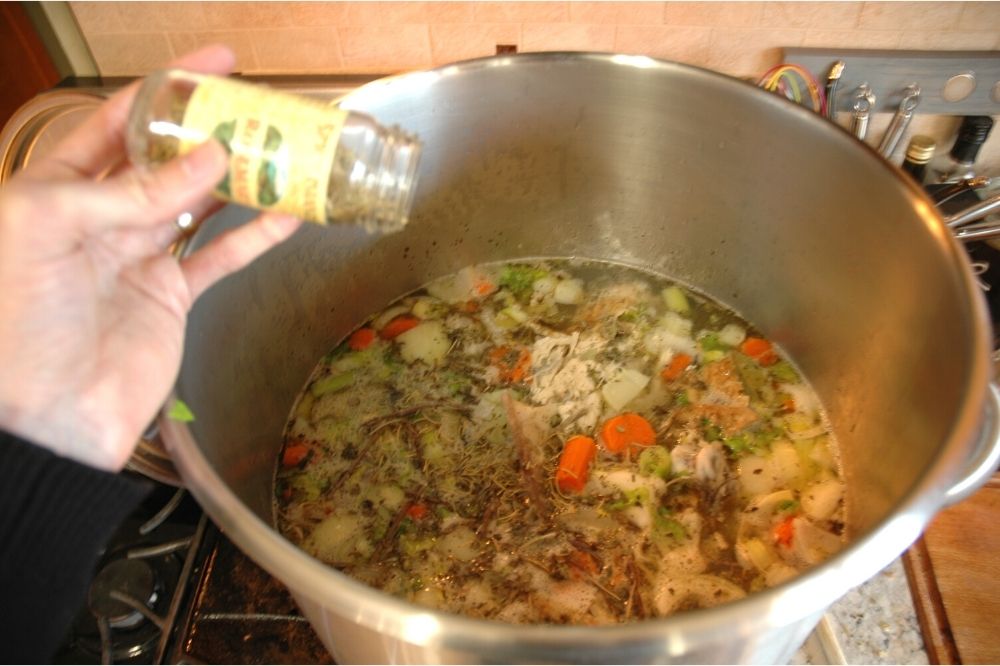This post was last updated on December 21st, 2021 at 07:57 pm
Thanksgiving leftovers can be almost enjoyable as the Thanksgiving Day feast itself. But there’s one more thing you might want to add to your list of things to save at the end of the big day: the turkey carcass itself. Use it to make a tasty turkey stock.
If you’re a guest at someone’s home, you might be able to claim their carcass if they plan to toss it out. It might look useless, but you can make quarts of turkey stock from the carcass and use that stock for soups, sauces, or slow cooker meals. The beauty of stocks is their versatility.
And if you prefer chicken, no problem. The steps involved for making chicken and turkey stock are nearly identical. The difference is that chickens tend to be smaller, so you’ll likely get less stock from a chicken than a turkey.
I prefer homemade stocks to bouillon cubes, in part, because homemade stock includes more nutrients. Also, store-bought bouillon cubes and bases are often loaded with salt. With a homemade stock, you decide how much salt to add, if any.
A nice thing about stocks: They’re hard to screw up
From my experiments in the kitchen, a stock is hard to screw up. The main task is to simmer the carcass (with or without meat left on) in a pot of water. For more flavor, add veggies, namely onions, garlic, carrots, and celery. To give the stock a darker color, include the onion skin.
If you prefer using a recipe, you’ll find dozens online. Some stock recipes also call for adding herbs, such as rosemary and thyme. I’ve even seen recipes calling for white wine and ketchup.
Whether to add salt to your stock is perhaps the biggest question—from a health standpoint. I prefer to add none. This way, I can add salt to the meals I make from the stock, knowing that I’m starting from zero salt in the stock (except for whatever amount of salt is in the carcass itself).
Stock recipes call for simmering a carcass in a large pot typically for 3 hours or more. For a stronger flavor, reduce the stock (let more water evaporate). For weaker flavor, add more water.
For a richer flavor, some people like to brown the carcass by roasting it before making the stock.
Once the stock is finished cooking, use a fine sieve or cheesecloth to strain out the veggie pieces and bones. Let the stock cool. Then skim the fat off the top. Refrigerate and use within a couple days or freeze the stock.

Stocks vs. broth: Does it matter?
You might have noticed I haven’t used the term “broth.” There is a difference between a stock and broth. I’m no expert, but, based on my research, simmering time is a factor in distinguishing between a broth and stock. Stock takes longer to cook, which helps to release collagen from the bones, making a thicker stock. This brings up another difference: Stocks are always made from bones, while a broth can be made from just meat.
When searching online, you might notice some stock recipes seem more like broths and vice versa. Honestly, unless you’re a chef or foodie, I’m not sure it matters. In my kitchen, as long as the family enjoys eating the final product, that’s what counts.
Whether you call it a stock, broth, or whatever—just don’t let that turkey carcass go to waste this Thanksgiving. The stock you make from it will likely cost less than the store-bought versions, taste better, and be more nutritious! Cooking with homemade stock can be part of your larger strategy to avoid processed foods and eat as many whole foods as possible.

